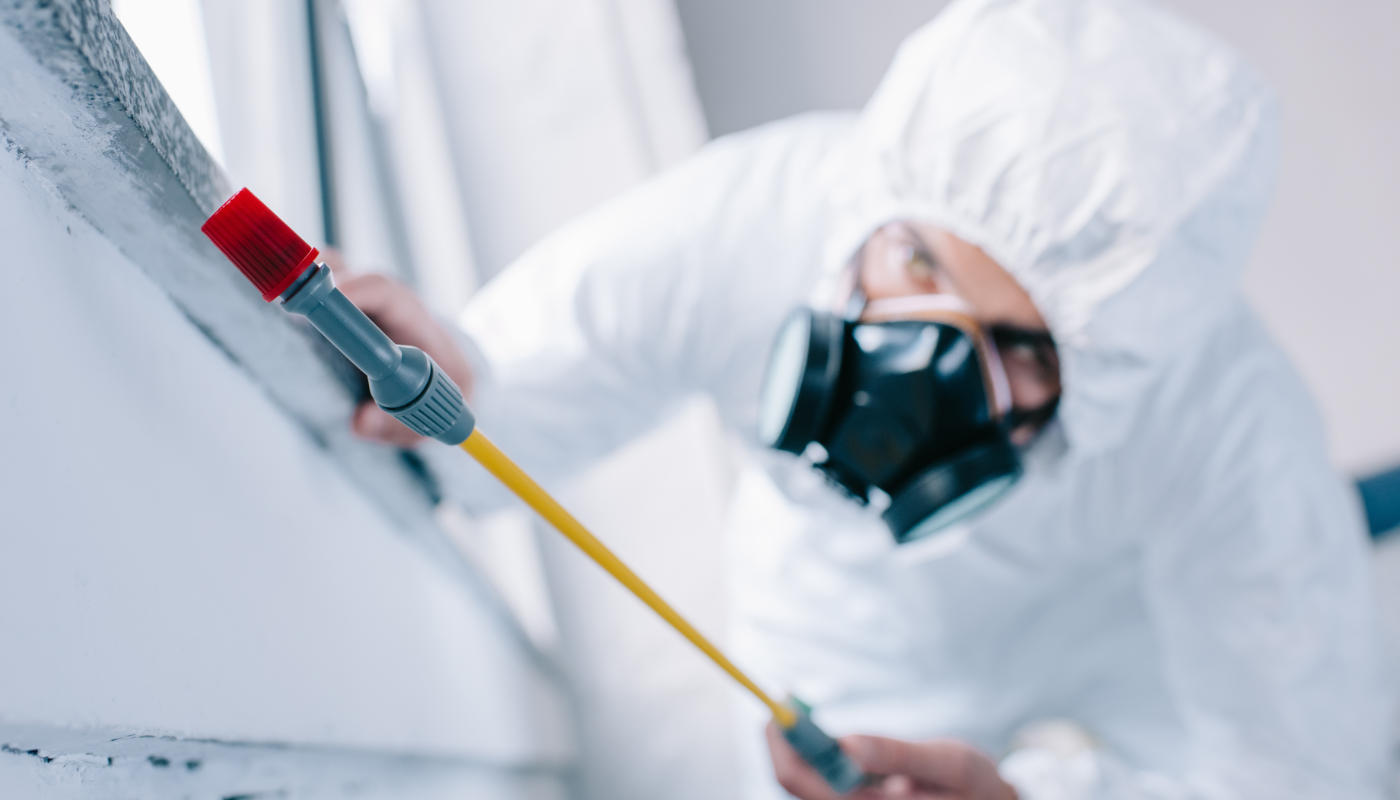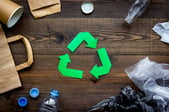
Pest control is one of the oldest quality and hygiene control subjects. It is as old as the existence of agriculture. Through time, pest control has evolved into pest management. What is pest control management? What are the steps and procedures to respect? How to choose the right pesticide?
Usually, when pest control appears on the news or in an article, the human mind goes straight to the food industry and agriculture applications. However, pest control is not only related to these activities, it is applicable in the majority of industries, even in our accommodations.
It is a legal requirement to manage pest control, regardless of the work activity. In-house controls allow the facility to control all possible infestations or the accessibility of pests to its establishment. The lack of proper pest control could cost an important amount of money to the company and could interfere with business operations. When there is a breach and pests are detected in the working area, pests control services and professionals are called to investigate and intervene.
Pest control management allows these professionals to follow strict protocols and procedures to operate efficiently and solve pest problems.
What is pest control management?
It is important to mention that pest control laws and regulations are not the same in all countries, even among the members of the European Union (EU).
Pest control management is the process of identifying, controlling, and sometimes eliminating a pest problem (rodents, insects, etc.) from places where they normally should not be present. The intervention may or may not include the use of chemicals (usually pesticides). When a professional service provider intervenes on-site, certain protocols and procedures should be respected to effectively eliminate or control the pest problem.
To help and guide pest control professionals and their commitment to the protection of public health, food and property, there are organisations such as the National Pest Management Association (NPMA) in the United States of America and the Confederation of European Pest Management Associations (CEPA) in Europe.
CEPA and the European Standards Institute have developed the EN 16636 standard to efficiently manage pest control to limit some unprofessional use of pesticides and other products EN 16636 standard to efficiently manage pest control. This standard is not mandatory for professional service providers.
The EN16636 standard and the United States Environmental Protection Agency (EPA) adopt an environmentally friendly approach, the Integrated Pest Management (IPM).
So, what is Integrated Pest Management?
The Food and Agriculture Organization of the United Nations (FAO) defines IPM as “the careful consideration of all available pest control techniques and subsequent integration of appropriate measures that discourage the development of pest populations and keep pesticides and other interventions to levels that are economically justified and reduce or minimize risks to human health and the environment.”
IPM is now the most adopted pest control approach to help protect the environment and human health. It aims to limit and minimise the use of pesticides.
Discover the best Apps for your HSE management
Pest management planning and procedures
Pest management aims to reduce the economical damage caused by pests and to limit their presence or eliminate them. To reach this objective, a series of procedures and efficient planning must be carried out by a professional service provider and be approved by the client (the damaged company). All professionals in pest control must have certifications and accreditations to conduct their business. There are different types of certification depending on the type of pests to control. It is the same for in-house pest control, the personnel should be trained to use the products and procedures.
1- Inspection/assessment of the site, risk assessment and pest identification
The pest control professionals should gather information about the work site of their client, such as the nature of the work/business, size of the facility, in-house pest control procedures, previous intervention records, site map, etc.
Once all information is gathered and studied, a pest control technician inspects the site to check the possible infestation’s location, the pest’s activity or presence, the surrounding environment (temperature, food supply for pest, thriving conditions for pests, etc), the infested locations’ accessibility and most importantly the identification of pest(s).
Afterwards, a report of the site investigation is sent to the client describing all the collected data and the type of intervention according to the identified pest(s). The report should also mention the risks that might occur depending on the site's work environment, surroundings, and premises and the potential risks and impact on the environment. In addition, the report should include the possibility of the reappearance of the pests after treatment about the nature of work and its surroundings.
2- Pest management plan and legal applications
Based on the assessment, the site’s inspection and pest identification, the pest management plan can be established. The plan includes the adopted strategy (physical and mechanical intervention, pesticides, locations, equipment needed, supplies, etc), the schedule and frequency of the intervention. The plan should take into account the surrounding environment and in-house control to monitor any possible changes or any other factors that may affect the pest management plan.
An important aspect of the pest management plan is the legal requirements and application of certain products. Therefore, before taking any action, the professional service provider should design a legal framework to establish which regulations are applicable. Because, when it comes to pesticide and chemical products usage, as mentioned above, each country has its different legislation.
For example, in the European Union (EU) there are regulations and directives (Directive 2009/128/EC and Regulations 1107/2009 and 396/2005) to oversee pesticide restrictions, approval and uses in its member countries.
Moreover, the regulation EC 1907/2006 also known as the REACH Regulation (Registration, Evaluation, Authorisation, and Restriction of Chemicals) controls the use of chemical pesticides in the EU and obliges the manufacturing industry to add leaflets about the use of the product, the Personal Protective Equipment to use, its impact on the environment and human health and other important information. In addition to the REACH Regulation, each country sets its legal criteria and requirements for the labelling and use of pesticides in the market.
In the United States of America, the use of pesticides should be authorised by the EPA and then each product will have its own EPA registration number mentioned on the label of the product along with all the necessary information for its use, protection, environmental impact, etc.
This legal information and regulations will allow the adoption of the right and legal strategies for the pest control management plan.
3- Waste management
After each pest control activity, the waste resulting from the intervention should be carefully managed. The service provider should dispose of the waste safely without causing any harm to the surrounding environment, and the business operation of the worksite and premises. Also, it is his responsibility to respect the waste disposal regulations.
4- Report, record keeping and recommendations
Each intervention should be registered in the internal records of the service provider, mentioning:
- Name and address of the client
- Date and time
- Type of intervention: products used, methods of application and area
- Clients’ recommendations and progress of any previous ones
- The professional user’s ID
This record should be kept in case of an audit or an inspection from the authorities, to prove that the pest control professional is in line with the regulations and directives.
A report is issued to the client where all the actions and the pest control plan are described. It should identify the objectives of the intervention laid out in the pest management plan and whether they were achieved or not. In the report, there could also be recommendations for actions to be taken by the client to keep and maintain sanitary conditions and hygiene in place to prevent the reappearance of pests.
5- Monitoring
To ensure the quality assurance and control of the service provided, and the security and safety of the worksite, several visits are planned to monitor the effectiveness of the treatment. The frequency of the follow-ups is determined by the client and depends on the initial type of actions taken and defined during the pest management plan.
These inspections can be organised and conducted by using checklists forms where each site visit is recorded, dates of previous interventions, the pesticides used in the initial pest control plan, the surroundings and all the information about the pest management plan.
Pest control management should be rigorously planned to comply with each country's laws and regulations. There is nothing better than a digital tool to help you digitise the inspection forms and use digital checklists. Moreover, issuing both internal records and client reports is less time-consuming thanks to this digital tool. All this information can be stored and documented thanks to an Electronic Document Management system (EDM). It can also provide you with a regulatory watch, helping you to stay updated and notified quickly if you need to take any required actions.
To go further:
> Insure the best document management system with BlueKanGo’s digital platform and its app Electronic Document Management (available on BueKanGo’s Marketplace)
. . .




.jpg?width=169&name=unnamed%20(7).jpg)
